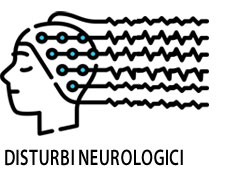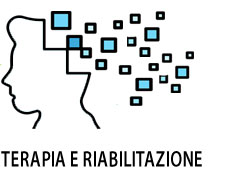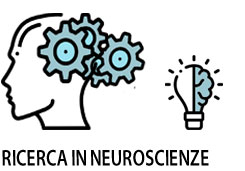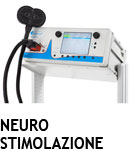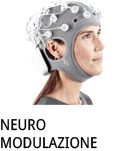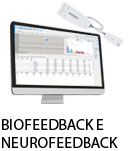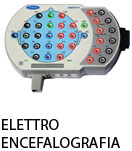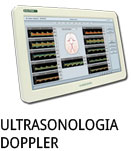- +39 011 5821948
- info@geasoluzioni.it
- Lun - Ven 8:00 - 17:00
Single-Session of Combined tDCS-TMS May Increase Therapeutic Effects in Subjects With Tinnitus
- Abstract:
- To treat motor and psychiatric disorders, transcranial direct current stimulation (tDCS) and transcranial magnetic stimulation (TMS) are used in clinics worldwide. We combined these two types of neuromodulation technique to increase the effective response of a single session of neuromodulation in subjective tinnitus. Eighty tinnitus subjects were split into four different treatment groups: tDCS, tDCS with sham TMS, tDCS-TMS, and TMS group. Subjects were given 1.5 mA tDCS on the bi-frontal area and TMS stimulated the contralateral single side of the temporo-parietal cortex with 200 pulses at 1 Hz stimulation. Comparing pre-treatment questionnaire scores to post-treatment questionnaire scores, all four groups showed statistically significant improvements. Although there was no significant difference among group comparison, the largest mean difference was shown in the combined group, especially for tinnitus intensity and tinnitus-related distress. Responders in the combined group were the highest for VAS intensity, with a maximum of 80% of twenty subjects. To summarize, dual-neuromodulation responders could consist of responders of frontal tDCS and temporal TMS. In addition, abnormal activity in the frontal or temporal area of the responders is presumed to be modulated by treatment and will be suggested as the target areas in future studies.
- Patologie/Applicazioni:
- Anno:
- 2020
- Tipo di pubblicazione:
- Articolo
- Parola chiave:
- stimolazione magnetica transcranica; stimolazione elettrica transcranica; tinnitus; sham
- Testata scientifica:
- Frontiers in Neurology
- Nota:
- Combinazione delle due tecniche di stimolazione cerebrale non invasiva tDCS e TMS nel trattamento degli acufeni (Tinnitus). I 4 gruppi sperimentali consistevano in: (1) il gruppo tDCS, (2) tDCS con il gruppo sham TMS (tDCS-shTMS), (3) il gruppo combinato tDCS e TMS (tDCS-TMS) e (4) il gruppo TMS. E' stato qui utilizzata la tDCS bifrontale in quanto è più efficace della tDCS temporale per quanto riguarda il controllo del tinnitus. Con la TMS invece è stata stimolata l'area temporale controlaterale del lato acufene. I soggetti assegnati al gruppo trattato con tDCS hanno ricevuto una stimolazione di 1,5 mA-DC su entrambe le aree frontali per 20 minuti; l'anodo è stato posto sulla zona frontale sinistra (F3) e il catodo sulla zona frontale destra (F4). Nei soggetti assegnati ai gruppi TMS (il gruppo tDCS-TMS e il gruppo TMS) le soglie motorie a riposo sono state misurate dal Magpro X100 (Tonica Elecktronik A/S, Danimarca) e hanno ricevuto una stimolazione all'80% dell'intensità della soglia motoria misurata, che variava dal 5% ad un massimo del 30% dall'uscita dello stimolatore. Utilizzando il sistema 10' 20, una singola sessione di TMS è stata applicata alla corteccia temporo-parietale contralaterale del lato acufene del soggetto, tra T3 o T4 e la P3 o P4, per 3 min 20 s con 200 impulsi a una bassa frequenza di 1Hz. Nell'insieme, lo studio attuale ha mostrato una tendenza dell'effetto additivo nel gruppo tDCS-TMS rispetto ai gruppi solo tDCS o TMS per quanto riguarda il trattamento del tinnitus. Poiché il gruppo al quale sono stati somministrati 200-impulsi-TMS combinati con la tDCS non hanno mostrato differenze significative rispetto agli altri tre gruppi, sono garantiti studi futuri che utilizzano un aumento del numero di impulsi di TMS.
- DOI:
- doi.org/10.3389/fneur.2020.00160
MagPro X100 Magventure Stimolazione Elettrica Transcranica Stimolazione Magnetica Transcranica Articolo Originale
Hits: 1281
La nostra storia
GEA soluzioni si affaccia nel 2013 al mercato della strumentazione medicale di alto livello tecnologico ma la sua storia parte da più lontano, clicca qui per approfondire.
GEA SOLUZIONI SRL
via Spalato 72/A, Torino
Tel.: 011 5821948 / 011 4463853
Fax: 011 0433281
Email: info @ geasoluzioni.it
P. IVA IT11696920013
REA TO1233648

